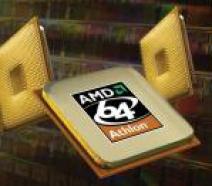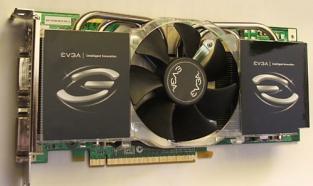OOPS! You forgot to upload swfobject.js ! You must upload this file for your form to work.
Details on Intel Itanium processor Poulson generations
![]()
|
xtreview is your : Video card - cpu - memory - Hard drive - power supply unit source |
|
|||
|
|
||||
 Recommended : Free unlimited image hosting with image editor
Recommended : Free unlimited image hosting with image editor
|
POSTER: computer news || DETAILS ON INTEL ITANIUM PROCESSOR POULSON GENERATIONS |
DATE:2012-07-22 |
|
|
Failure of equipment suppliers and software developers to reach an understanding with deciding the fate of Intel Itanium processors questioned the bright future of these solutions. However, Intel is actively working on a new, tenth Itanium generation , which is also known under the code name of Poulson. Some details about these processors have already been discussed . Associate was able to examine the document entitled Itanium Processor 9500 Series: Reference Manual, which contains a bunch of previously unknown information about Poulson. Thus, processor chip Poulson, will be known as the Itanium 9500, has 3.1 billion transistors, which in turn form eight cores. Also Poulson includes two arrays of shared cache memory, two memory controllers Scalable Memory Interconnect (SMI), supporting up to 512GB DDR3 memory per slot, 5-channel bus QPIc. Chip area is 588 square millimeters.  Poulson has a total of 54 MB cache memory: 32 MB L3 cache , split between the core of 8 blocks 4 MB, 2 MB L2 cache, 4MB L2 Cache, 2.2 MB directory cache, 3.6 MB last level, and tags 169 KB second-level tagging instructions. Each Poulson core has 16KB data cache and 16KB instruction cache. The entire cache supports error correction code. In the central part of the crystal there is a 10-channel router, which manages memory and I / O system, as well as four channels of QPI links at the top with the two halves channel at the bottom. Last assist in creating computers with up to eight sockets for processor Itanium. In comparison with Tukwila, previous-generation Itanium, Intel engineers in Poulson transistor budget efficiently dispose for each core to have 89 million transistors (109 million in Tukwila). The width of conveyor was doubled to 12 teams and retained compatibility. Intel will present up to four processors Poulson: Itanium 9520, Itanium 9540, Itanium 9550, 9560 and Itanium. Their debut will take place in this year . Related Products : | ||
|
|
||
|
xtreview is your : Video card - cpu - memory - Hard drive - power supply unit source |
|
|
|
|
||
|
Xtreview Support  N-Post:xxxx Xtreview Support        |
DETAILS ON INTEL ITANIUM PROCESSOR POULSON GENERATIONS |
| Please Feel Free to write any Comment; Thanks  |
The new version of GPU-Z finally kills the belief in the miracle of Vega transformation (2017-09-08)
The motherboard manufacturer confirms the characteristics of the processors Coffee Lake (2017-09-08)
We are looking for copper coolers on NVIDIA Volta computing accelerators (2017-09-08)
The Japanese representation of AMD offered monetary compensation to the first buyers of Ryzen Threadripper (2017-09-08)
This year will not be released more than 45 million motherboards (2017-09-08)
TSMC denies the presentation of charges from the antimonopoly authorities (2017-09-08)
Radeon RX Vega 64 at frequencies 1802-1000 MHz updated the record GPUPI 1B (2017-09-08)
AMD Vega 20 will find application in accelerating computations (2017-09-08)
Pre-orders for new iPhone start next week (2017-09-07)
Radeon RX Vega 57, 58 and 59: the wonders of transformation (2017-09-07)
The older Skylake processors with a free multiplier are removed from production (2017-09-07)
Meizu will release Android-smartphone based on Helio P40 (2017-09-07)
The fate of Toshiba Memory can be solved to the next environment (2017-09-07)
Lenovo released Android-smartphone K8 (2017-09-07)
Advertising Radeon RX 570 for 279 dollars AMD caused a storm of emotions (2017-09-07)
Panasonic P9 a new Android-smartphone entry-level (2017-09-07)
The European Court sent Intel case on abuses for reconsideration (2017-09-07)
Huawei overtook Apple and became the second largest smartphone manufacturer in the world (2017-09-07)
Twelve-core Core i9-7920X lost the lid in front of the photographic lens (2017-09-06)
In exchange for increasing the stake in the joint venture with Toshiba, Western Digital Corporation is ready to refuse to participate in the auction (2017-09-06)
![]()
To figure out your best laptops .Welcome to XTreview.com. Here u can find a complete computer hardware guide and laptop rating .More than 500 reviews of modern PC to understand the basic architecture


7600gt review
7600gt is the middle card range.
We already benchmarked this video card and found that ...

 geforce 8800gtx and 8800gts
geforce 8800gtx and 8800gts  Xtreview software download Section
Xtreview software download Section  AMD TURION 64 X2 REVIEW
AMD TURION 64 X2 REVIEW  INTEL PENTIUM D 920 , INTEL PENTIUM D 930
INTEL PENTIUM D 920 , INTEL PENTIUM D 930  6800XT REVIEW
6800XT REVIEW  computer hardware REVIEW
computer hardware REVIEW  INTEL CONROE CORE DUO 2 REVIEW VS AMD AM2
INTEL CONROE CORE DUO 2 REVIEW VS AMD AM2  INTEL PENTIUM D 805 INTEL D805
INTEL PENTIUM D 805 INTEL D805  Free desktop wallpaper
Free desktop wallpaper  online fighting game
online fighting game  Xtreview price comparison center
Xtreview price comparison center Lastest 15 Reviews


Rss Feeds
Last News
- The new version of GPU-Z finally kills the belief in the miracle of Vega transformation
- The motherboard manufacturer confirms the characteristics of the processors Coffee Lake
- We are looking for copper coolers on NVIDIA Volta computing accelerators
- Unofficially about Intels plans to release 300-series chipset
- The Japanese representation of AMD offered monetary compensation to the first buyers of Ryzen Threadripper
- This year will not be released more than 45 million motherboards
- TSMC denies the presentation of charges from the antimonopoly authorities
- Radeon RX Vega 64 at frequencies 1802-1000 MHz updated the record GPUPI 1B
- AMD itself would like to believe that mobile processors Ryzen have already been released
- AMD Vega 20 will find application in accelerating computations
- Pre-orders for new iPhone start next week
- Radeon RX Vega 57, 58 and 59: the wonders of transformation
- ASML starts commercial delivery of EUV-scanners
- The older Skylake processors with a free multiplier are removed from production
- Meizu will release Android-smartphone based on Helio P40
- AMD Bristol Ridge processors are also available in American retail
- The fate of Toshiba Memory can be solved to the next environment
- duo GeForce GTX 1080 Ti in GPUPI 1B at frequencies of 2480-10320 MHz
- New Kentsfield overclocking record up to 5204 MHz
- Lenovo released Android-smartphone K8

HALO 3 HALO 3 - Final Fight!

PREY Prey is something you don t often see anymore: a totally unigue shooter experience.

computer news computer parts review Old Forum Downloads New Forum Login Join Articles terms Hardware blog Sitemap Get Freebies


